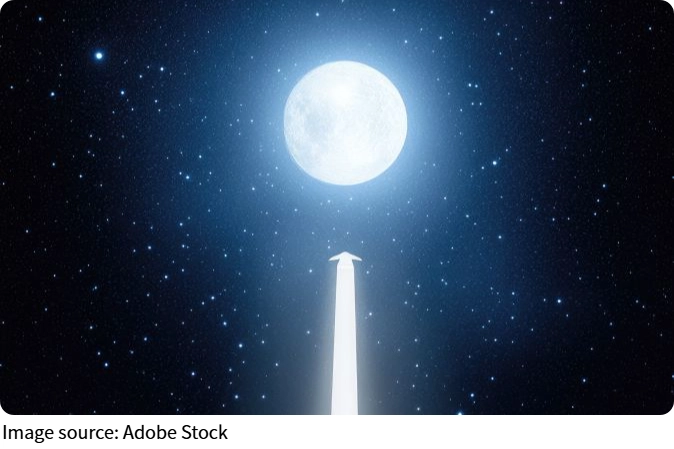Journey to Moon

Lykkers, have you ever looked up at the night sky and wondered how long it takes to reach the glowing moon above us? For centuries, we’ve told stories, dreamed of traveling there, and built technology to make it possible.
Today, we can finally answer that question with science and precision. But the journey isn’t just about time—it’s about power, technology, and the human spirit that pushes us forward. Let’s walk through this adventure together, from the first spark of launch to the moment we orbit the moon.
The Launch: Our First Step Toward the Sky
When a rocket lights up the night sky and lifts from its launchpad, it’s not just fuel and fire—it’s the first step of our collective dream. Rockets burn massive amounts of fuel, releasing energy that pushes them upward and away from Earth’s pull. As we climb higher, gravity weakens, and the rocket accelerates.
But the path to the moon isn’t simple; it demands precise planning, accurate navigation, and advanced guidance systems. Engineers calculate Earth’s and the Moon’s positions, then chart a path with adjustments along the way, so that we stay right on track.
Breaking Free from Earth’s Pull
Reaching the moon means breaking through one of the toughest barriers—Earth’s gravity. To escape, rockets must reach what’s called “escape velocity.” For Earth, that’s about 11.2 kilometers per second. Imagine traveling that fast!
But inside the rocket, astronauts don’t feel a sudden burst of speed because the acceleration is gradual. Advanced life support systems regulate air, temperature, and comfort, so even at incredible speeds, astronauts can safely continue their journey.
Correcting Our Path: Midway Adjustments
Even with careful planning, space isn’t predictable. Small changes in gravity or fuel efficiency can push the rocket slightly off course. That’s why midway corrections are essential. Scientists use onboard systems to adjust direction, rotate the spacecraft, or apply small bursts of force to guide us back onto the right orbit.
And in case something goes wrong? Rockets are designed with backup systems and emergency protocols. This way, astronauts can switch to alternative controls and still keep the mission safe.

Entering Lunar Orbit: The Final Approach
As we draw close to the moon, the journey becomes delicate. Instead of racing forward, the rocket slows down, adjusting its trajectory to let the moon’s gravity “catch” it. This stage is known as lunar orbit capture. Precision is key here—too fast, and we miss; too slow, and we crash.
Once in orbit, the rocket becomes a stable base, ready to support experiments, exploration, and future missions. Depending on the mission plan, the spacecraft might circle the moon for days or even weeks, powered by solar panels and supported by fuel reserves.
How Long Does It Take?
So, how long does the trip really take? On average, reaching the moon takes about 3 to 5 days. The exact time depends on the rocket’s performance, its trajectory, and the conditions of space. Some missions may take slightly longer for safety or efficiency.
Once in orbit, the timeline can extend for weeks as experiments and tasks unfold. And here’s an exciting thought—future technology could make the journey even faster! With better propulsion systems and smarter routes, one day we might cut travel time significantly.
A Journey of Dreams and Discovery
From ancient legends of moon goddesses to the roar of modern rockets, our fascination with the moon has never faded. Traveling there is not just about speed—it’s about discovery, courage, and the hope of reaching further. Lykkers, when we look at the night sky, let’s remember that every rocket that rises carries our shared dream of exploration.
The journey to the moon shows us what we can achieve when science, imagination, and determination come together. Who knows—maybe one day, we’ll step on the moon ourselves and look back at Earth with awe.
Our Journey Continues
Lykkers, the moon is more than a glowing neighbor—it’s a reminder of our endless curiosity and courage to explore. Each time we look up, let’s remember that the journey doesn’t end here. The stars are waiting, and together, we’re writing the next chapter of human discovery.


